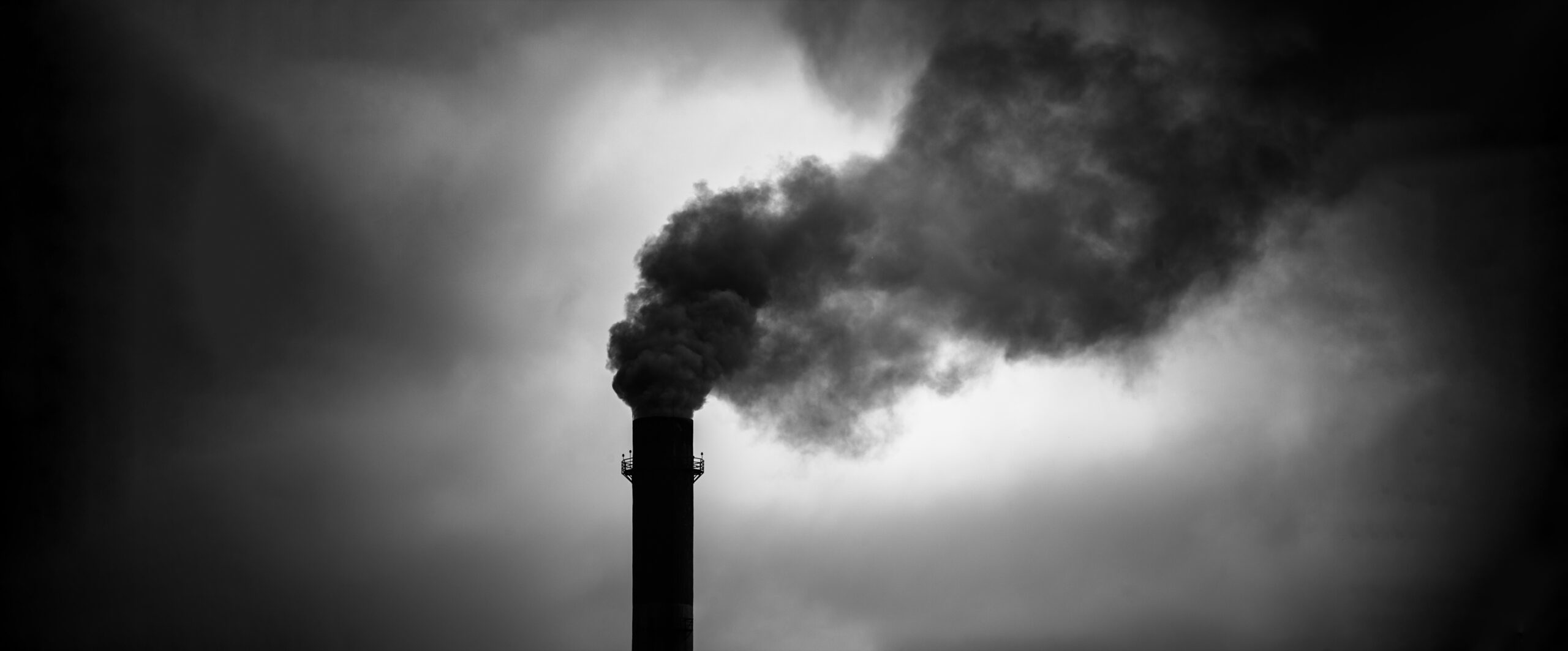How Reducing Black Carbon Soot Improves Human Health
People everywhere are rightly concerned about the human-caused global generation of tiny, harmful particles. These particulates adversely affect human health and contribute to climate change. Reversing the harmful effects is a worthwhile goal, especially in light of God’s creation mandate that humans need to take care of the planet, and new research shows that this goal is attainable.
Black carbon soot and black carbon aerosols are tiny particles of carbon and carbon compounds that easily float up into the atmosphere. Both particulates are emitted from the incomplete burning of coal, wood, agricultural wastes, oil, and gasoline and diesel fuels. Black carbon soot and aerosols are now present everywhere in Earth’s atmosphere. They are especially prevalent in the Indian subcontinent, China, northern Canada, and eastern Siberia (see figure).

Credit: NASA
Black Carbon and Global Warming
The black carbon in the Canadian Arctic and eastern Siberia originates from India and China, where winds carry much of the black carbon emitted there and deposit it upon the Canadian Arctic and eastern Siberia. In an article I wrote a year and a half ago,1 I explained how snow and ice reflect sunlight at a 50 to 70% efficiency rate. When black carbon soot falls on snow and ice, it can reduce sunlight reflectivity down to only 5 to 20%. This reduction in reflectivity causes the snow and ice to absorb more heat from the Sun, which increases the atmospheric temperature above the snow and ice. When the snow and ice melt away, it exposes the ground below where the reflectivity of sunlight ranges from 5 to 30%.
Black carbon deposits explains why parts of the Canadian and Siberian Arctic are warming at rates nearly five times greater than the global average. Climatologists now know black carbon—aerosols and soot—is the major contributor.2 It’s also a significant contributor to climate change in all the world’s regions. While worldwide greenhouse gas emissions are the dominant contributor to global warming and climate change, black carbon soot and black carbon aerosols play an important role.
Black Carbon and Human Health
Black carbon particulates are known to be coemitted with highly toxic compounds. The particulates act as a carrier of a wide variety of toxic chemicals. These chemicals disable the body’s defense cells and systemic blood circulation.2 Studies show a strong correlation between black carbon particulates and cardiovascular disease (CVD) and cardiovascular morbidity (CVM) for both short- (less than 24 hours) and long-term (more than 1 year) exposure.3 These and other studies show that CVM and CVD are 6–26 times greater for humans affected by black carbon particulates than by other atmospheric particulate pollutants.
A team of five environmental engineers led by Shubha Verma used an integrated modeling framework and the latest atmospheric particulate and human health data to determine the health impacts of black carbon emissions in one of the world’s most black carbon-polluted regions—the Indo-Gangetic Plain (IGP).4 The IGP as defined by the five authors extends from the mouth of the Ganges River, along the Ganges Valley, up to the border with Pakistan. It’s the most densely populated region in India, home to over 400 million people. Of these 400 million humans, 60 million are exposed to exceptionally high levels of black carbon atmospheric particulates and aerosols. The exposure level for these 60 million during the Indian winter exceeds 20 micrograms per cubic meter. For the 12 million people who live in the central cores of the two megacities, Delhi and Kolkata, the exposure level during winter is greater than 40 micrograms per cubic meter. That level is well above the World Health Organization’s theoretical threshold limit for safe exposure to black carbon particulates and aerosols, which is 5 micrograms per cubic meter. A review of hospital statistics reveals cardiovascular hospital admissions and cardiovascular deaths start rising at a black carbon atmospheric particulate level of 1 microgram per cubic meter.5
The five environmental engineers determined that the cardiovascular death rate in the IGP could be reduced by 400,000 lives per year if the black carbon particulate and aerosol level could be reduced to 5 micrograms per cubic meter. They showed that this atmospheric level could be achieved for the IGP through a tenfold reduction in total coal consumption, an 85% reduction in consumed diesel fuel in urban and megacity regions in the IGP, and a tenfold decrease in residential burning of wood, dung cakes, and crop wastes.
Mitigation Strategies for Improving Human Health and Saving Millions of Lives
The engineers’ proposals for saving 400,000 lives per year in the IGP is based on replacing diesel engines in trucks with gasoline-battery hybrid engines, cap-and-trade policies for power plant and brick kiln factories, and the near total elimination of residential burning of wood, dung cakes, and crop wastes. However, as the five noted in their paper, Western Europe has already brought black carbon emissions down to less than 1 microgram per cubic meter by different means. Western Europe achieved this success by replacing coal consumption with natural gas. Natural gas burning releases no particulate or aerosol emissions at all.
Natural gas is cheaper than coal. For trucks it’s less than half the price of diesel. Per unit of energy gained, natural gas releases only half the carbon dioxide of coal and diesel fuel. If the people living in the IGP (1) replaced all their coal-fired electric power-generating plants, brick-manufacturing factories, and other factories presently using coal with natural gas, and (2) converted all their diesel-powered trucks with engines modified to run on natural gas, black carbon emissions would be reduced to 1.5 micrograms per cubic meter or less.
A greater challenge lies in making substantial reductions in the residential burning of wood, dung cakes, and crop waste. Natural gas is much cheaper than wood. However, infrastructure must be established to pipe natural gas into residential areas of the IGP. An obvious starting point would be to bring natural gas to residential neighborhoods in urban areas where the residents currently burn wood. A second step would be to bring natural gas to rural parts of the IGP where people burn dung cakes and crop waste.
These steps to bring black carbon emissions in the IGP down to medically safe levels would yield a dramatic lowering of greenhouse gas emissions and a huge reduction in healthcare costs. Megacities in the IGP would experience lower temperatures.
The engineers’ article only addressed the health problems of cardiovascular disease and morbidity. However, the wide range of respiratory diseases and morbidity brought on by high black carbon emissions is equally costly for the IGP’s healthcare systems.
The IGP is not the only part of India where black carbon emissions are far above medically safe levels. Strategies for bringing down black carbon emissions in the IGP can be implemented in the rest of India in a manner that would benefit the whole country. These strategies would equally help other parts of Asia and the world that also suffer the effects of high black carbon emissions in an economically beneficial manner. A big bonus would include the reduction of black carbon deposits in the Canadian north and eastern Siberia.
As I explained in my article posted three weeks ago, natural gas is not the long-term solution to global warming, climate change, and human health crises. However, natural gas can buy us the time we need to implement economically beneficial solutions. Those solutions exist, and it’s our responsibility as stewards of God’s creation to use our time and Earth’s resources wisely and compassionately to implement them for the benefit of humans and all life.
Endnotes
- Hugh Ross, “Black Carbon’s Link to Climate Change,” Today’s New Reason to Believe (blog), Reasons to Believe, April 12, 2021, https://reasons.org/explore/blogs/todays-new-reason-to-believe/black-carbons-link-to-climate-change.
- Nicole A. Janssen et al., Health Effects of Black Carbon (WHO Regional Office for Europe: Bonn, Germany, May 2012). https://unece.org/DAM/env/documents/2012/air/Health_Effects_of_Black_Carbon_report.pdf.
- Francine Laden et al., “Reduction in Fine Particulate Air Pollution and Mortality: Extended Follow-Up of the Harvard Six Cities Study,” American Journal of Respiratory and Critical Care Medicine 173, no. 6 (March 15, 2006): 667–672, doi:10.1164/rccm.200503-443OC; Ying Li et al., “Assessing Public Health Burden Associated with Exposure to Ambient Black Carbon in the United States,” Science of the Total Environment 539 (January 1, 2016): 515–525, doi:10.1016.j.scitotenv.2015.08.129.
- Shubha Verba et al., “Black Carbon Health Impacts in the Indo-Gangetic Plain: Exposures, Risks, and Mitigation,” Science Advances 8, no. 31 (August 5, 2022): id. eabo4093, doi:10.1126/sciadv.abo4093.
- Thomas J. Luben et al., “A Systematic Review of Cardiovascular Emergency Department Visits, Hospital Admissions, and Mortality Associated with Ambient Black Carbon,” Environment International 107 (October 2017): 154–162, doi:10.1016/j.envint.2017.05.005.






